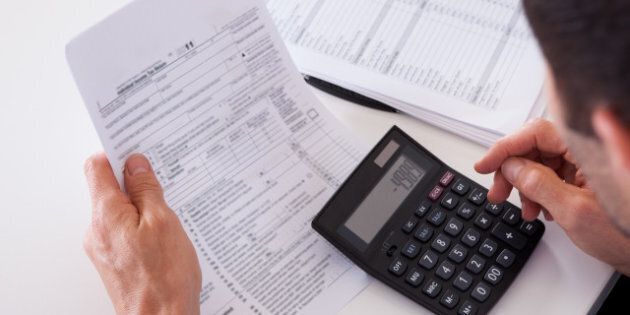
There are many different types of tax preparers but one of the most trusted is mom and dad. Many younger Canadians rely on parents to help them file their first tax returns, but there does come a time when you need to take control of your tax return and learn how to prepare it yourself.
How to calculate a refund
No matter how you file your tax return, you should have a basic understanding of how the forms work. If you use tax software and discover you have an unexpected $5,000 refund, it would be worth re-checking your numbers. One gentleman came into the office quite upset that he didn't receive the $2,000 refund he calculated using software, and received a tax bill instead. But he had not entered his income. There are times when software is no match for human error.
In order to receive a tax refund, you must have paid income tax during the year. So if you want to claim tuition and education credits, you need to have paid tax. The same applies to the Transit Pass Credit, medical expenses and charitable donations. These are non-refundable credits, which means they cannot create a refund for you. You must owe income tax to claim them against.
People earning less than $10,822 in 2012 do not pay federal income tax. So if you had tax withheld from your paycheques and earned less than this amount, you need to file a tax return in order to receive the money back.
Deductions and credits
Moving and childcare expenses and RRSP contributions are all tax deductions. This means they are deducted from your taxable income and tend to have a bigger impact on your tax return. The actual amount of tax savings will depend on your income for the year. Charitable donations, children's fitness and arts expenditures and the cost of a first-time home are all eligible for credits. Credits are multiplied by 15 per cent before calculating tax savings.
Report all your income
The Canadian tax system is based on self-reporting, so you are responsible for reporting all income you earned during the year. This includes tips if you work in a service industry. Ideally, you should have tracked your tips or other cash payments throughout the year, but I realize not everyone is so organized. If you estimate your tips in the food industry, it may be more money than you think. The Canada Revenue Agency has audited waiters and servers and estimates tips can be as much as 200 to 400 per cent of income.
If the slip starts with a T, it is an income slip and needs to be reported in the right year. This is especially important for people with multiple jobs, and multiple income slips. The CRA will use your SIN to match T slips to your tax return. Miss one and the CRA will send you a reassessment. Miss T slips twice in three years and there will be penalties. File a T1 Adjustment Request or use My Account to include a late T slip.
Am I self employed?
Contract jobs are becoming more popular because they allow employers more flexibility. But contract means more work at tax time for workers. If you are self-employed, you report your income on a personal return T2125 Form. This form also allows you to claim expenses. You are allowed to claim any reasonable expenses you incurred to earn your income, and these are deducted from the total to lower your tax payable.
This means you may be able to claim a portion of your transportation to and from your job, supplies and tools. If you work from home, there are also office expenses you can claim. But you need to keep receipts and documents to back-up your claims. Remember, every piece of paper represents tax savings.
Refund or pay?
I believe that, ideally, you want to complete your return and owe nothing, as a tax refund is money you have overpaid the government during the year. But some people like this type of forced savings plan and make the choice to generate a refund. Others adjust the withholdings from their paycheque to ensure they do not get a refund. It is your choice.
You should still file a tax return even if you earned little to no income. There are provincial and federal credits that are calculated based on your current tax return. If you don't file, benefits like the quarterly GST/HST will stop.
These pointers are, of course, only a summary. If you are filing for the first time, read the instructions, check your figures twice, and consider using tax software or working with a tax professional.
